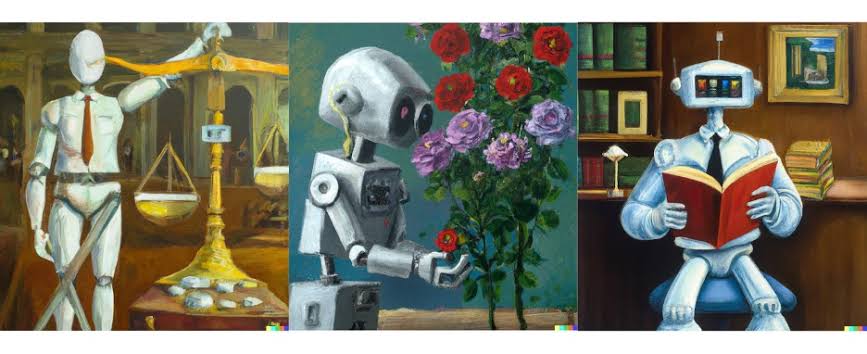Explore the ethical implications of AI-generated art, including challenges related to authorship and ownership. Discover how traditional concepts of creativity are being redefined in the digital age and what it means for the future of artistic expression.
The Ethical Dilemma of AI Art, Authorship and Ownership Artificial intelligence has brought about changes in various industries including the realm of creativity. The rise of AI created artwork has ignited discussions on the topics of authorship and ownership. This article delves into the aspects of AI art examining the complexities surrounding who holds rights, to AI generated creations and how these dilemmas question established notions of artistic expression.
Understanding AI Art
AI artwork is produced using algorithms and machine learning techniques that generate images based on provided data. Models like networks (GANs) and deep learning methods are trained on collections of art to create pieces. In this process the AI's task is to generate art that either resembles or alters styles it has learned from its training.
The Concept of Authorship
In the realm of art, the concept of authorship has typically been clear cut. The person who imagines and brings an artwork to life is recognized as its creator. However with the rise of AI generated art this notion becomes more intricate. Here the AI takes on the role of the creator instead of a human artist. This scenario prompts discussions, about creativity and how human involvement shapes the artistic process.
When an AI produces a piece of art it relies on the programming and data sets provided by its human developers. This situation calls for a reevaluation, of authorship. Should the credit go to the AI's creator, for the artwork? Or does the AI itself have a claim to authorship? Moreover if the AI draws inspiration from the works of artists does that mean its creators are more like curators than actual authors?
Ownership of AI Art
The ownership of art created by involves legal and ethical complexities. In the realm of art ownership is straightforward; the individual who creates the piece or purchases the rights typically holds the ownership. However when it comes to art ownership can become ambiguous due to the involvement of parties such as the developers of the AI the users of the AI technology and the providers of the datasets used.
Copyright laws are struggling to keep up with advancements, in AI. Currently existing copyright regulations usually stipulate that a human author must be involved to assert rights over a creation complicating the safeguarding of AI generated artwork. If AI is viewed as a tool rather than a creator the attribution of ownership for the artwork may fall upon the person or organization who programmed the AI or utilized it to produce the art. This scenario raises questions about the level of legal protection afforded to AI generated works and whether existing laws need to be revised to address these emerging challenges.
Ethical Considerations
The ethical considerations surrounding AI art go beyond issues of authorship and ownership. A key concern is the risk of AI art reinforcing biases found in its training data. As AI models learn from existing artworks they may replicate or amplify biases related to gender, race and other factors present in their datasets. This raises questions about the responsibility of AI developers in addressing and mitigating these biases.
Another ethical dilemma is the potential impact of AI art, on the value of creativity. There are arguments that the ease with which AI can generate art could diminish the perceived worth of works, leading to a reduced emphasis on personal expression and originality in the art world. This viewpoint underscores the significance of differentiating between the contributions of machines in artistic creation and recognizing how they coexist in the evolving realm of art.
Future Directions
As AI progresses the conversation surrounding its impact on art is likely to change. There is an increasing demand for guidelines that tackle the challenges posed by AI generated content. These guidelines should take into account the essence of creativity and originality the rights of human contributors and the potential influence of AI on artistic processes.
Educational programs that raise awareness and knowledge about AI in art can also be crucial. By encouraging conversations about the consequences of AI art various parties such as artists, developers, legal professionals and the general public can collaborate on solutions that honor both human creativity and technological progress.
Conclusion
The emergence of AI generated art is shaking up ideas about who owns art and how authorship works. This calls for a fresh look at what it means to be an artist, in todays digital landscape. With technology evolving we need to establish guidelines, on both ethical and legal fronts to tackle these new challenges. Through discussions and a quest for solutions we can navigate the realm of AI art while recognizing the input of machines.
